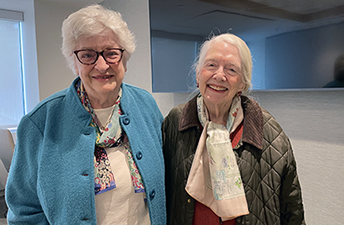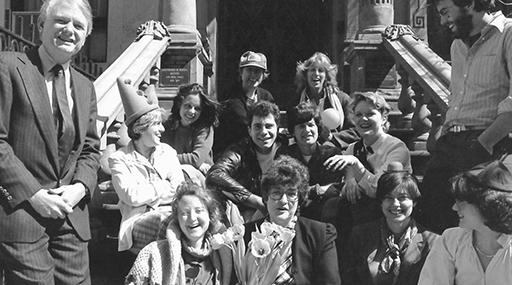March 26th, 2025
The Saviors of Central Park: Part Three: Pam Tice
Today the existence of the Central Park Conservancy as an operating arm of the New York City Department of Parks is well established and the constellation of circumstances surrounding its birth is barely remembered. Before introducing Pam Tice, the civic-organizational professional manager who played a savior’s role in assisting me in the oversight of the Conservancy and the realization of its fundraising potential during the first five years of its existence, I need to mention the fact that this civic organization was born out of the wholehearted support of Parks Commissioner Gordon Davis and endorsement by Edward I. Koch, who served as served as mayor of New York City from 1978 through 1989.
Based on my position as head of the Central Park Task Force, and the fact that I was already occupying an office within the Park Department’s headquarters in the Arsenal, Commissioner Davis decided to give me an official position within his administration, thereby creating the position of Central Park Administrator, a job for which there was no precedent or relevant job line item within the Park’s Department Budget. This meant that I had been appointed to a prestigious job and given an injunction to raise my own salary and those of any staff members I wished to hire who were not already on the payroll of the Department of Parks.
Gordon was immediately helpful in assisting me in staffing my office and recruiting a board of governors for the new not-for-profit civic organization for which we obtained a New York State charter under the name Central Park Conservancy. We were both pleased when William S. Beinecke agreed to step into the role of president of the board. It should be mentioned here that, in addition to the Central Park Task Force, there was another seed from which the Conservancy was sprouted. Named the Central Park Community Fund, it was the joint philanthropic project of Richard Gilder, and George Soros who had teamed up to create a non-taxable vehicle from which they made generous grants for such necessities as equipment and supplies to improve the performance of the Parks Department’s existing Central Park workforce and also to support a professional consultant to apply professional business analytics to the management of Central Park. While Soros continued to build his own private philanthropic empire, Gilder, who was an old friend of mine, became a Conservancy board member and one of Central Park’s most generous saviors.
Although President Beinecke and the members of the board that he, Commissioner Davis and I had collectively recruited were generally supportive of my vision for rebuilding Central Park according to the management and restoration plan that was underway as the primary operational priority, day-to-day management oversight of the Conservancy as a business was not deemed to be my forte. It was therefore decided that there should be an executive director working side-by-side with me, the Central Park administrator cum president of the Central Park Conservancy.
_
It is not every day that a savior shows up on your doorstep with the intention of adding proficiency to your professional domain. The lucky exception in my case was meeting Pam Tice, the candidate selected by a Conservancy board member in the Wealth Management sector of business. I was very pleased to have had a good reminiscence of old times with Pam over tea last week. “Would you be willing to write a “mini-memoir” covering your days with the Conservancy for me to post on my website?” I asked as we said good bye, and she graciously agreed to write the following account:
The Central Park Conservancy’s First Five Years by Pam Tice

Pam Tice and Betsy reminiscing, 2024. Photograph by Sara Cedar Miller.
The Central Park Conservancy Board held its first meeting in December 1980. I had just been named Executive Director in November, reporting to Elizabeth Barlow, Central Park Administrator. There was no job description, so I shared the new Board members’ thoughts at their first meeting: “What are we here for?”
Several pieces were already in place. The Conservancy was designated a non-profit organization, and its new Board of Directors was in place under the leadership of William S. Beinecke. The New York City Parks Department and its Commissioner recognized us and our work.
Under Betsy’s leadership of the Central Park Task Force, work was going forward. There was a horticulture program. The Dairy had been restored, and a nascent visitor services program was underway. The Sheep Meadow had been restored to grassy splendor. People could see and understand what we planned to accomplish: we had a building and a landscape to demonstrate.
There was no playbook for the organization’s startup, and, like any new organization, everything had to be done simultaneously. If the Conservancy were to succeed, private-sector fundraising would be crucial. It would also be essential to communicate what we were doing to counter the skepticism that “rich New Yorkers were taking over the Park.”
In the first five years, the Conservancy identified work and projects that the Parks Department had no resources to undertake; we raised funds, and we started the work. One of my key tasks was to organize and build a fundraising operation. By year three, we were all working on a long-term Central Park Management and Restoration Plan.
I had help from the highest level of volunteers and consultants. Direct mail expert Sanky Perlowin arrived to set up a direct mail campaign that continues unto the present day. In the pre-digital age, letters were written, and the “package” was designed. Mailing lists were traded with the New York Public Library and other cultural organizations. Checks began arriving. Thank-you letters were mailed, and records were kept in big boxes of paper files. Katharine Hepburn sent a check, and soon we exchanged notes about a Park tour. When I met her on the appointed date and hour at the Belvedere Castle, which we had begun operating as an environmental educational center, she was telling the staff how she came there as a young actress to learn her lines.
Mr. Beinecke sent me to McKinsey & Company early on. He had arranged for a young consultant there to work with me on developing a Fundraising Plan, similar to the work done on a plan they had done for Mr. B.’s fundraising on behalf of Yale University. While I have no record of that plan today, I’m sure it guided me to the corporate, foundation, and significant individual funders in New York City. We had to write proposals, develop our “pitch,” and design special events, from a ceremony to note a new project to annual events that would always be associated with the Conservancy and the Park.
We had to develop our “pitch” about the Park’s importance and its needs way beyond the funds that taxpayers could supply. This was a new concept in 1981 in New York: could a public space generate private funds and remain public? Interestingly, the document Gordon Davis and Betsy Barlow developed to explain why Christo and Jean-Claude’s proposed conceptual outdoor art work The Gates would not work contained the seeds of many of the concepts developed in those years, asserting the Park’s significance as a work of art, a public space, and a cultural institution.
We were lucky! We were rebuilding from the fiscal crisis, and the economy was robust. There were numerous offers of advice and the wisdom of cultural and business leaders on our board of directors. The board itself organized committees that had to be staffed. My job was to keep the whole effort organized and to make it grow.
During those first five years, we formed the Women’s Committee in order to initiate the Frederick Law Olmsted Award Luncheon, an annual fundraising event, which has been held since its inception in 1982 in the Conservatory Garden adjacent to the Harlem Meer in the North End of the Park. Significant planning began to fully restore the Park’s landscape and buildings; I helped coordinate the portion called “The Management Plan.”
Mistakes were made: why did anyone think someone would buy a Conservancy t-shirt at the Simon and Garfunkel reunion concert? Sometimes, there was too little communication about a planned project. Once, a young staff member used a $25,000 check as a bookmark, showing us we had to sharpen our financial operation. At our rented space in a townhouse on East 72nd Street, the summer interns from Yale who were conducting the tree survey upset the owner with their muddy boots. Space was always a problem; soon, staff were housed in multiple locations, and regular staff meetings became necessary.

The entrance to 41 East 72nd Street, the first home of the staff of the Central Park Conservancy, c. 1983.
If there’s one memory of these years that has lasted, it’s this: the high-achieving staff assembled during these years whose commitment to the Park was unparalleled. Overlaid with a sense that we were all having the time of our lives, rebuilding Central Park. Someone from the Conservancy staff recently said, “We heard you had many parties.” Oh yes, we did, and those potluck affairs always had the songwriters who got us to sing tunes written just for the Park. Many of these people are my best friends today. This photo was taken on the steps of the East 72 Street townhouse, where we worked together.
Share
